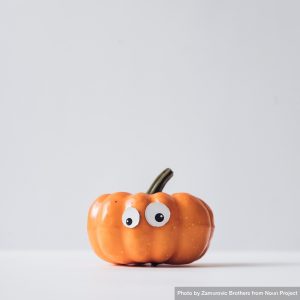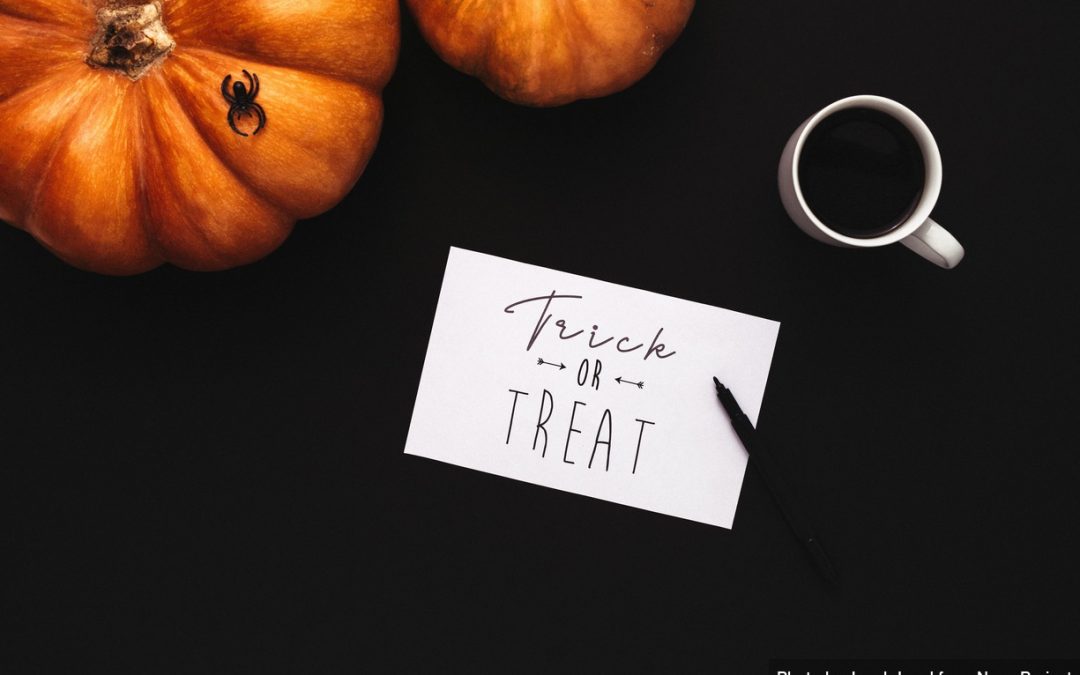No matter how you celebrate (or don’t), it’s still possible to make greener choices and reduce your waste!

by Jacob Lund from Noun Project
Trick Or Treat?
If you choose to hand out candy, or take children out to trick or treat, think about treats’ contents and its packaging. Individually-packaged treats are likely required for safety reasons, but candy isn’t the only thing you can hand out! Consider small gifts like pencils, erasers, seeds to plant, or bookmarks. If you do decide to hand out something edible, there are several ways you can reduce your impact. If you’re doing prepackaged handouts on a table, consider placing them in small paper bags instead of plastic (dollar stores even carry these!), so they can be recycled later.
Consider palm oil: deforestation due to palm oil harvesting is significantly harming endangered species like orangutans. A lot of candy options have palm oil, usually harvested irresponsibly. Look for options made without palm oil, or from companies who are members of the Roundtable on Sustainable Palm Oil.
Fair Trade certification is another aspect to consider, as cocoa farming and harvesting too often violates human rights and harms the environment. Kids should be trick or treating, not labouring on cocoa farms! Manitoba Council for International Cooperation explains more about Fair Trade here.
These may be less practical to hand out for trick or treating, but The Good Trade has a list of a few brands to consider that are both Fair Trade and likely palm oil-free: barkTHINS (most flavours), DAGOBA Organic, Divine Chocolate, Endangered Species Chocolate, Equal Exchange chocolates, and Theo. If you’re not going out, you can make some spooky treats for at-home haunted fun – Pinterest has a lot of ideas from frozen peeled “eyeball” grapes to spaghetti “brains”.
Costumes

by Denis Kuvaiev from Noun Project
Costumes can be great fun, and you don’t need a big gathering to enjoy dressing up! Whether it’s wearing a full costume to school or just putting on a crazy hat for your virtual meeting, you can create a costume on the cheap with little waste. Once Upon A Child is a great source for kid’s Halloween costumes, and thrift stores usually have a well-stocked Halloween decoration and costume section for all ages. Or, make a fun costume! My husband used poster paper and a pair of suspenders and dressed up as a bus for more years than I’d care to admit. Boxes also make great costumes as a present, computer, piano, rubic’s cube, or dice! If you’re wearing costume makeup, be sure to choose non-toxic options. The blog “The Big Green Purse” suggests face paints from Earth Paint, Go Green, or Glob’s Natural Face Paint as good alternatives. Want to wear a mask? Masks have traditionally been part of Halloween costumes, but these days, that may be even more true. Why not skip the makeup and dress up a non-medical mask to fit the costume? Or, dress up as a healthcare worker! Just make sure the mask fits well, covering the nose and mouth, since costume masks aren’t a safe substitute for cloth.
Pumpkins: Don’t Trash Them!

by Zamurivoc Brothers from Noun Project
Jack O’ Lanterns are an iconic part of Halloween, but sometimes we forget that pumpkins are also food! If you’re carving your pumpkin, save the seeds for a roasted pumpkin-seed snack. Once it’s slumping on your porch, it’s time to compost it in your backyard compost pile (or find a friend who will take it for you). It will break down faster if you can chop it up a bit first.
Unfortunately, carved pumpkins are quickly no longer safe to eat (after only two hours!), so we don’t recommend eating your porch pumpkin…unless you decided to leave it uncarved! Intact pumpkins may not be as sweet and the small “pie” pumpkins, but they are still tasty. Getty Stewart shares how to make homemade pumpkin purée on her blog here.




Recent Comments